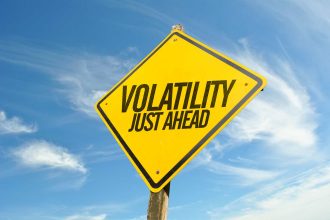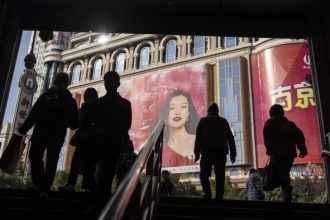China’s annual producer prices sank for a ninth-straight month in June, while consumer prices remain unchanged, official data showed Monday, underscoring the depth of the challenges that beset the world’s second-largest economy in reviving demand and revitalizing growth.
Monday’s inflation data underwhelmed market expectations, offering fresh evidence that China’s economy may require more muscular policy support to sustain the country’s recovery from its strict “zero-Covid” curbs late last year.
Producer prices sank 5.4% in June from a year earlier and slipped 0.8% from a month ago, according to China’s National Bureau of Statistics. This was weaker than a Reuters poll that had expected a 5.0% annual decline, compared with the 4.6% annual decline in May. The annual decline in June was China’s ninth consecutive drop and its steepest since December 2015.
Weak producer prices “could be attributed, in part, to a higher base for comparison, as global commodity prices were surging a year ago following Russia’s invasion of Ukraine,” Capital Economics’ Zhichun Huang said in a note Monday.
“PPI deflation is likely to ease somewhat in the second half of the year, partly because infrastructure spending should put a floor under commodity prices,” he added.
Annual consumer price inflation was flat in June — driven by a 7.2% drop in pork prices — underwhelming expectations for a 0.2% rise in a Reuters poll and weaker than the 0.2% rise in May. Monthly consumer price inflation in June was weaker 0.2%, weaker than expectations for flat growth and tracking the 0.2% decline in May. The monthly decline was China’s fifth consecutive fall.
Core inflation, which excludes food and energy costs, was 0.4% in June, compared with 0.6% in May.
“Fuel price deflation, a key factor behind subdued headline inflation recently, will probably wane over the coming months,” Capital Economics’ Huang said. “As such, we expect headline inflation to rise to around 1% by the end of this year. But this would still be soft and won’t constrain the People’s Bank of China’s ability to loosen policy further.”
The Chinese central bank eased rates in August and embarked on another round of cuts more recently in June.
In a statement released end-June after its monetary policy committee’s quarterly meeting, the People’s Bank of China acknowledged the weak demand and sluggish growth that account for the tepid and uneven growth recovery. The PBOC also reiterated that monetary policy should be “precise and forceful.”
Policy support
China’s faltering prices will likely heighten market expectations for a more meaningful slew of policy measures from a Politburo meeting later this month, where the Communist Party’s top brass traditionally review the country’s economic performance in the first half of the year.
That will happen after China’s second-quarter economic growth data — along with a slew of other monthly data points for industrial production, employment, retail sales and fixed asset investment — is released July 17.
June money supply data is scheduled for release Tuesday, along with trade data Thursday.
Last Thursday, Chinese Premier Li Qiang convened a symposium on the economic situation, aimed at soliciting advice from several economists, according to a Chinese government readout.
Li pledged an introduction of targeted and coordinated policy measures, which would be implemented in a timely manner to stabilize growth, ensure employment, and guard against risks.
Li also stressed the importance of an effective mix of policies, given that China is in a critical economic recovery and industrial upgrading period.
He said targeted and coordinated policy measures should be introduced and implemented in a timely manner to stabilize growth, ensure employment, and guard against risks.
China’s State Council, or cabinet, had pledged in mid-June to roll out “more forceful measures” in a timely manner to enhance the momentum of economic development, optimize the economic structure, and promote sustained recovery.
However, the electric car industry — which includes vehicles, battery charging stations and power grids — is the only area in which the central Chinese government has announced the most specific stimulus measures so far, primarily in the form of extending tax breaks.
The State Council also proposed measures to boost the consumption of household products, without going into details.
— CNBC’s Jihye Lee contributed to this report.
Read the full article here





